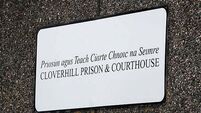History corner: The Cork man who ran himself into history

The Boston Marathon is one of the world’s oldest annual races and has become one of the most prestigious on the racing calendar.
In 2014, one year after the marathon bombings that shocked Boston and the world, Meb Keflezighi took victory wearing the names of the victims who died 12 months earlier on his race bib. He was the first American winner in over thirty years.
It was a fitting result for the historic marathon that was making a comeback in the face of adversity.
Ireland has a long association with the famous race, which was first held in 1897.
Neil Cusack, from Limerick, has long been recognised as the only Irish winner, achieving the remarkable fete in 1974 among a very strong field of runners.
However, Cusack was not the first man born on these shores to win in Boston.
John Charles Lordan was born in Bandon, Co. Cork, in 1876. Before the turn of the century, Lordan emigrated to the US and lived in Cambridge in the Boston metropolitan area. At this time, Cambridge was producing a number of fine long distance runners, such as Thomas Hicks who won the Olympic marathon in 1904, albeit in questionable circumstances.
Going into the 1903 Boston marathon, Lordan was not fancied as a favourite. He had finished fifth and third in 1901 and 1902 respectively, but these performances did not mark him out among the favourites.
The stellar field included the defending Canadian champion, Sammy Mellor Jr., and John P. Caffrey, winner in 1900 and 1901 who was second generation Irish. These two men were expected to do battle for the win.
On the day of the event, Lordan was taken ill and advised not to run by his doctor. Reluctant to withdraw, he took his position at the starting line anyway. Early in the race, leg cramps and stomach troubles hindered the Bandon man.
Mellor Jr. and Caffery led the race strongly from the outset. Eventually, Lordan’s cramps eased and he would get himself to within sight of the two leaders. Caffrey pulled out 15 miles into the race.
He struggled to maintain the pace of Mellor Jr. and had also been passed by Lordan. Lordan was now in second place but gaining time on Mellor Jr. The Canadian began to struggle himself, perhaps due to the fast pace he and Caffrey had set out at from the start. Lordan powered on to catch Mellor Jr. with less than 3 miles to go, overtaking him at the same time.
The defending champion was seen walking down Boston’s Heartbreak Hill, trying his best to get into a stride and back into the lead. However, Lordan was not to be caught.
He finished in a contemporarily outstanding time of 2:41:29. Mellor Jr. managed to hold onto second place, finishing 6 minutes behind Lordan.
The Boston Globe ran a front page headline on the race which read, “Marathon Run a Race of Marvels”.
The Boston Evening Transcript reported the agony Lordan felt throughout the race caused by sickness and said it was his “wonderful nerve alone that carried him through”.
The dedication and the drive which made Lordan a winner in 1903 is shown in how he trained. His job at the Pump Manufacturing Company of East Cambridge meant he could only train at night after a long days work.

The following year, at the 1904 St. Louis Olympics, Lordan ran in the marathon under the United States Olympic Committee. However, this was not necessarily a rejection of his Irish roots.
Before independence, Irish athletes were counted as British. There simply was not a platform to compete as an Irish athlete. Running as part of the American team was the logical way for Lordan, a US resident, to compete.
The Olympic marathon proved to be nothing short of bizarre. Lordan himself pulled out after 10 miles, succumbing to a fit of vomiting. This was an affliction suffered by many of the competitors.
Race organisers had set the course to travel over dirt tracks on an extremely hot day in the mid-American city. Cars that had been traveling in front of the runners had kicked up the dirt, making breathing very difficult for competitors in the 32 degree heat.
The organisers had also shown their incompetence by arranging the nearest fresh water to be available twelve miles from the course. Sammy Mellor Jr also withdrew after collapsing. Cuban, Felix Carvajal, stopped to eat an apple from an orchard and got terrible stomach cramps, possibly denying him victory.
The first Black African participants in the Olympics also took part in this race. One, a Zulu tribesman named Lentauw, was chased off course for a mile by a pack of dogs. Another competitor, Willaim Garcia, was found lying on the side of the road near death after suffering a stomach haemorrhage from ingesting so much dust that had come up from the track.
The finish was equally as wacky. Spectators had waited over three hours before Fred Lorz entered the stadium and crossed the line. President Teddy Roosevelt’s daughter, Alice, was about to present Lorz with his medal before it had been discovered that he had travelled 11 miles in a car to get to the stadium. He was later banned for one year from competitions.
Eventually, English-born Thomas Hicks, crossed the line in first place. Hicks had begged his trainer to let him pull out of the race after 11 miles, but instead, he was given a mix of strychnine, egg whites and brandy to help him along.
Towards the end of the race, his handlers had to carry him towards the finish line after his condition became so poor.
Thankfully, Olympic standards have improved such that a similar scenario is unlikely today.
Lordan died in America in 1937. However, In 2000, a memorial recognising his remarkable story and achievements was erected by the Bandon Athletics Club and unveiled by his niece, Judy O’Donoghue, at the Allen Square in his birth place of Bandon.












